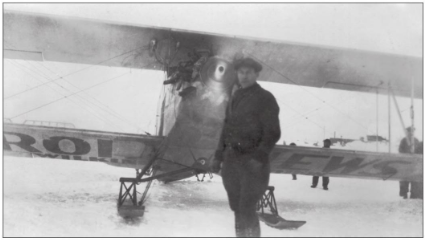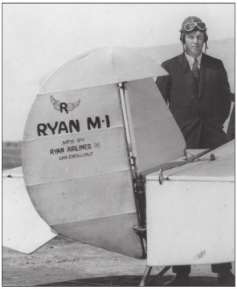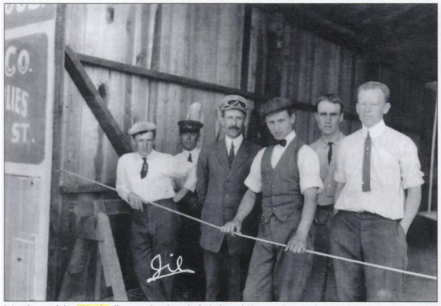When the Orville brothers conducted the first successful test flight in Kitty Hawk, North Carolina, very few could have predicted how important aviators would become to American culture. Pilots like Amelia Earhart, Charles Lindbergh, and the Orvilles became celebrities in their own right as aviation technology developed, and today these pioneers of flight serve as inspirations for new generations of pilots. Here, we’re delving into the history of just five of America’s greatest aviators.
Noel Wien

Noel Wien can be credited with bringing aviation to Alaska. He took his first airplane ride in 1921, and was hooked. In 1924, Wien made the first flight between Anchorage and Fairbanks. He would go on to fly from Fairbanks to Nome, past the Arctic Circle, across the Bering Strait, and a round-trip flight between Alaska and Asia.
In a daring 1925 feat, Wien was returning from a flight beyond the Arctic Circle when his plane ran out of gas, forcing Wien to land on a gravel bar. He walked 70 miles in three days, surviving on only three biscuits for food. Wien received his formal pilot’s certificate later that year. Through fantastic accomplishments, Wien earned himself nicknames like “the Arctic Ace” and “the Lindy of the North.”
Bessie Coleman
Not only was Bessie Coleman the first African American woman pilot, but the first Native American woman pilot as well. She earned the nicknames “Brave Bessie” and “The Only Race Aviatrix in the World” for her flying tricks and performance stunts. She dropped out of college after it proved unaffordable, and went to live with her brother in Chicago when she was 23. While she lived there, her brother would tease her that she couldn’t learn to fly a plane, but a French woman could. Later, Coleman would credit this as the fuel that made her pursue a career in aviation.
Coleman moved to France where she could receive equal pilot training, and received her international pilot’s license on June 15, 1921. She spoke at institutes around the country, refusing locations that were still segregated, and encouraging young women to learn to fly. Coleman showed films of her doing airborne tricks to schools. Her career came to a tragic close in 1926, when a roofless plane she was flying malfunctioned, causing it to flip over. Because Coleman wasn’t wearing a seatbelt, she fell to her death.
Charles Lindbergh

Charles Lindbergh was the first person to complete a nonstop solo trans-Atlantic flight from New York City to Paris in 1927. Caught in the grip of prospective air travel, Lindbergh studied engineering in college. He left college to become a stunt pilot at local fairs before enlisting in the U.S. Army in 1924.
The idea of flying nonstop across the Atlantic came from a New York City hotel owner in 1919, who offered $25,000 to the first pilot to make the flight, but by 1927, four men had died, three were injured, and two were missing after having attempted to cross the ocean. Lindbergh convinced nine businessmen in St. Louis to fund his journey. He even removed a parachute from his gear to make room for more fuel, earning him the name “the flying fool.” However, Lindbergh proved the skeptics wrong when he successfully reach Paris in under 35 hours, earning him a then-record in aviation.
James H. Doolittle
James H. Doolittle is best known for his leadership role in the attack against Tokyo during World War II. The general was born in December, 1896, and served in World War I as an aviator and flight instructor. During the 1920s, he studied at the Massachusetts Institute of Technology to receive a doctorate in engineering. He later went on to serve as an aircraft consultant and began racing planes, where he set a world record in 1932.
Doolittle returned to the Army Air Forces full time when World War II broke out. In April 1943, he led an air attack that struck Tokyo and surrounding cities. While the attack itself did little damage, it was significant in that it bolstered morale of American citizens after the attack on Pearl Harbor’s devastating impact. Doolittle was awarded the Congressional Medal of Honor and the Presidential Medal of Freedom for his achievements.
Wilbur and Orville Wright

A list of important early American pilots would not be complete without the two brothers who kick started aviation in America. Wilbur and Orville Wright were the first people to take to the sky in an airplane they designed in 1903. Wilbur and Orville’s love for aviation came from a gift from their father – this small helicopter made of bamboo, paper, and cork fascinated the boys, and inspired them to begin experimenting with their own designs.
The brothers selected Kitty Hawk, North Carolina as their testing ground because of its strong winds. They watched how birds manipulated their wings for angle and control to help them master their designs. After several experiments, they succeed in 1903, when Wilbur flew a power-driven plane for 59 seconds at 852 feet. It marked both the beginning of aviation in America, and the start of the legacy of the Wright brothers.
America has witnessed countless talented pilots throughout its aviation history. These five made waves both throughout the larger flying community and within their own local one. Their bravery to reach for the sky and test what was previously thought impossible makes them heroes of aviation.

